Presumably everyone knows that the length of the roads starting from Budapest is calculated from the Buda end of the Chain Bridge. That is, say, on Road 7, if we see that Budapest is 38 kilometres away, then we know that it is not the city borders that are 38 kilometres away, but the “starting point” of Clark Ádám Square, the milestone that marks the beginning of the roads. (There is an exception to this, because the kilometres on Road 1 are calculated from the BAH junction.)
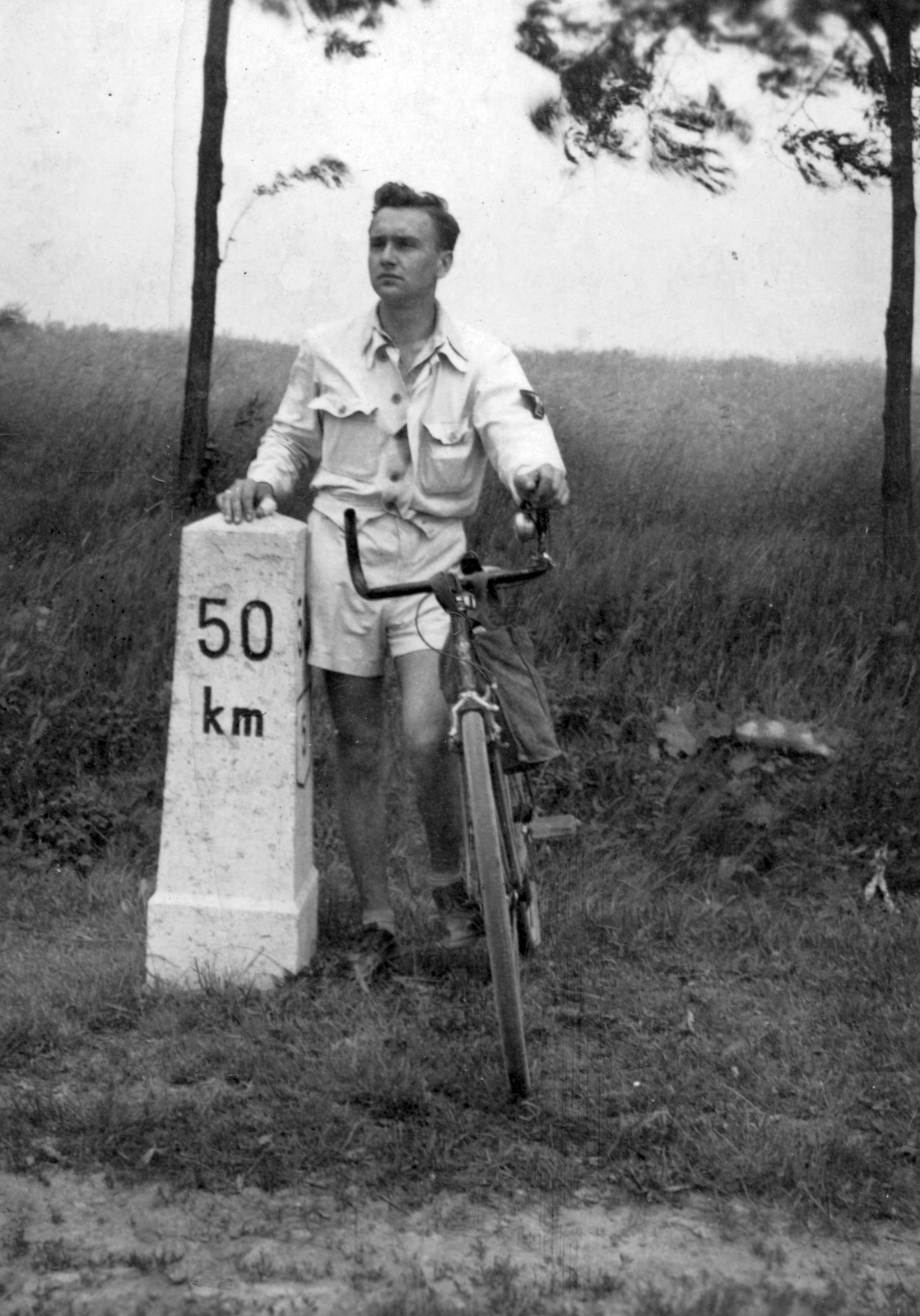
Kilometre stone from the 1940s (Photo: Fortepan/No.: 32451)
Distances have, of course, been shown on the roads for a very long time, as this is one of the most important figures for travellers. However, the system was not uniform for a long time, distances was calculated from the starting point of the road, and they were given in miles, not kilometres.
For a long time, it did not matter too much where the start of the road was calculated from, the travel speeds were also quite slow. But much has changed since World War I. Cars had become more common even in Hungary, and there had been more and more relatively well-built roads, i.e., paved with stone or asphalt.
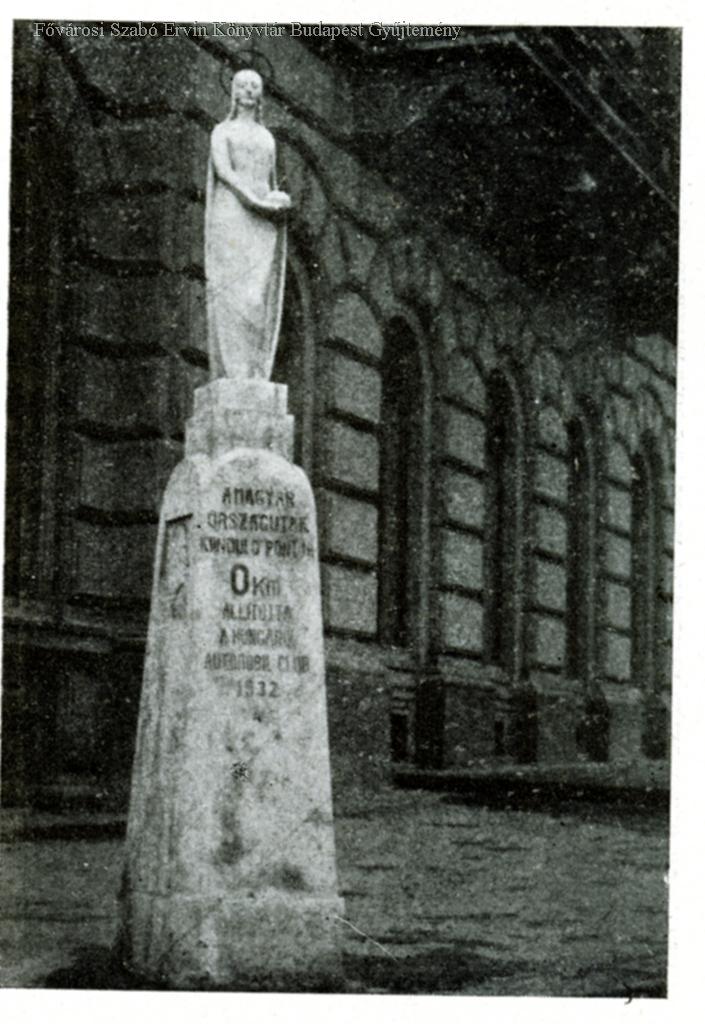
The statue erected on 7 May 1932 in Clark Ádám Square (Photo: FSZEK Budapest Collection)
In the ranks of the Hungária Automobil Club - that is, the Car Club - more precisely at the suggestion of Pál Festetics in the early 1930s, it was stated that the point from which the roads starting from Budapest should start should be indicated. The issue was also dealt with by the Public Works Council, as reported in the article of the 22 April 1932 issue of the 8 Órai Ujság:
“Anyone who arrives in Budapest by car, for example, can watch the declining numbering of kilometres all the way to the city borders. However, this numbering is just disappearing suddenly, and so far no one has really known where the point from which the distances are calculated. The Public Works Council has now officially stated that this so-called zero point is in the axis of the Buda bridgehead of the Chain Bridge in Clark Ádám Square.”
In fact, this was not so complicated, as the beginnings of the roads had previously been calculated from the Royal Palace, and the starting point was relocated to the bridgehead after the Chain Bridge was built. What is certain, however, is that until the 1930s, it was not particularly important to mark the starting point.
However, they did not know where this marking stone could fit. The problem was that before World War II, Clark Ádám Square was much better built in, it was not a real square, just an intersection, meaning there was not much free space. It was also suggested that a traditional 0-kilometre stone be erected in the middle of the road at the Buda end of the Chain Bridge, separated from the traffic by an iron fence, but the Chain Bridge's roadway was so narrow that it simply could not fit there.
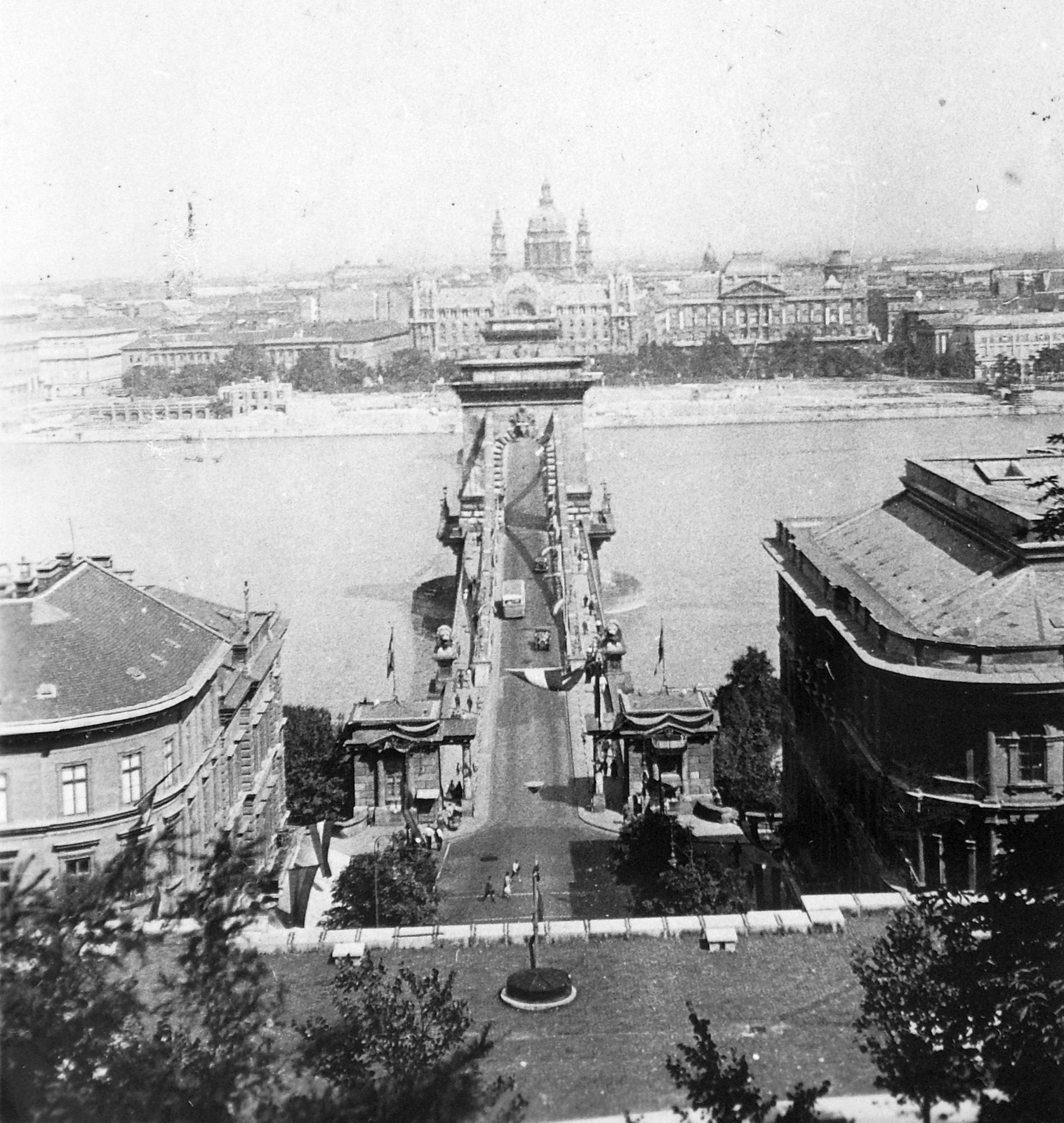
It was difficult to find a place for the kilometre-stone at the extremely narrow bridgehead (Photo: Fortepan/No.: 18594)
Finally, a solution was found to place a statue at the corner of the Ministry of Welfare, on the sidewalk: a marble statue of Jenő Körmendi Frim's Patrona Hungariae, which is standing on a slender column, on a stylised kilometre stone, with a relief on three sides of the column. On the pedestal of the statue, the inscription indicated the function: "The starting point of Hungarian country roads / 0 KM / Set by Hungary / Automobil Club / 1932", and the reliefs referred to traffic, because they depicted those travelling by car, carriage or on foot.
The unveiling took place on 7 May 1932 at 8 p.m. The Budapesti Hírlap reported on the event on 8 May 1932:
“At eight o'clock on Saturday evening, at the Buda end of the Chain Bridge, in front of the building of the Ministry of Welfare, the memorial statue of the zero-kilometre stone established by the Hungária Automobile Club was unveiled. This symbolic kilometre stone is considered to be the beginning of the branching country roads from Budapest. At the unveiling ceremony, Franz Joseph, the royal prince handed over the statue to the audience of Budapest with a short speech. On behalf of the city, Miklós Királyi, a technical adviser, received the monument, and in the light of the reflectors, the veil of Patrona Hungária's beautiful marble statue fell, which is an excellent work of the sculptor Jenő Körmendi-Frimm. The dignitaries of the Budapest car society also appeared at the unveiling ceremony.”
The road numbering system still in use today, i.e., the numbering of the main roads marked with the numbers 1, 2 and 3, was introduced in 1934, since then, the first seven main roads have been running from Budapest, the numbering of which starts from here.
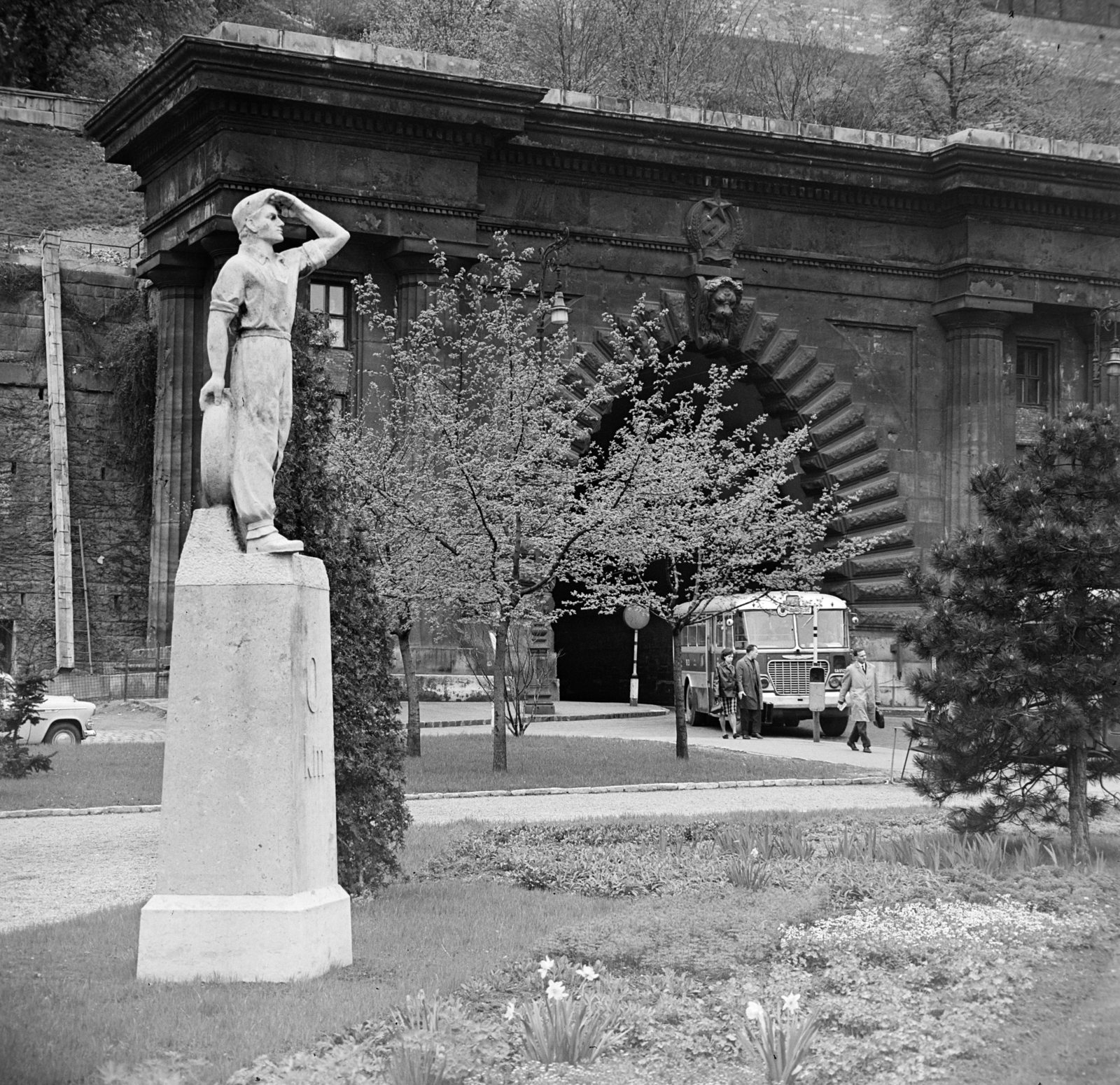
The new statue was erected in 1953 and remained in place until 1975. (Photo: Fortepan/No.: 178866)
The statue remained in place until the end of World War II, when it was destroyed along with the ministry building. As part of the reconstruction of the Chain Bridge, the Clark Ádám Square was also arranged. The decision to erect the new statue was made in 1952, and in 1953 the work of the new Zero Kilometre Stone by László Molnár, was placed on the southern side of the square, in the middle of the park. On the high pedestal, which was marked 0 km, was a worker holding a wheel but looking into the distance. This composition was replaced in 1975 by the statue of Miklós Borsos, still visible today.
The sculpture erected in 1953 still exists today, the pedestal has been added to the collection of the Museum of Transport, it can still be seen in an open-air exhibition in Karikás Frigyes Street, while the sculpture was located as a public space work in the 17th District, in Kodolányi János Square. However, the original Patrona Hungariae statue, erected 90 years ago, no longer exists.
Cover photo: The centre of every road, the Clark Ádám Square (Photo: Fortepan/No.: 134539)

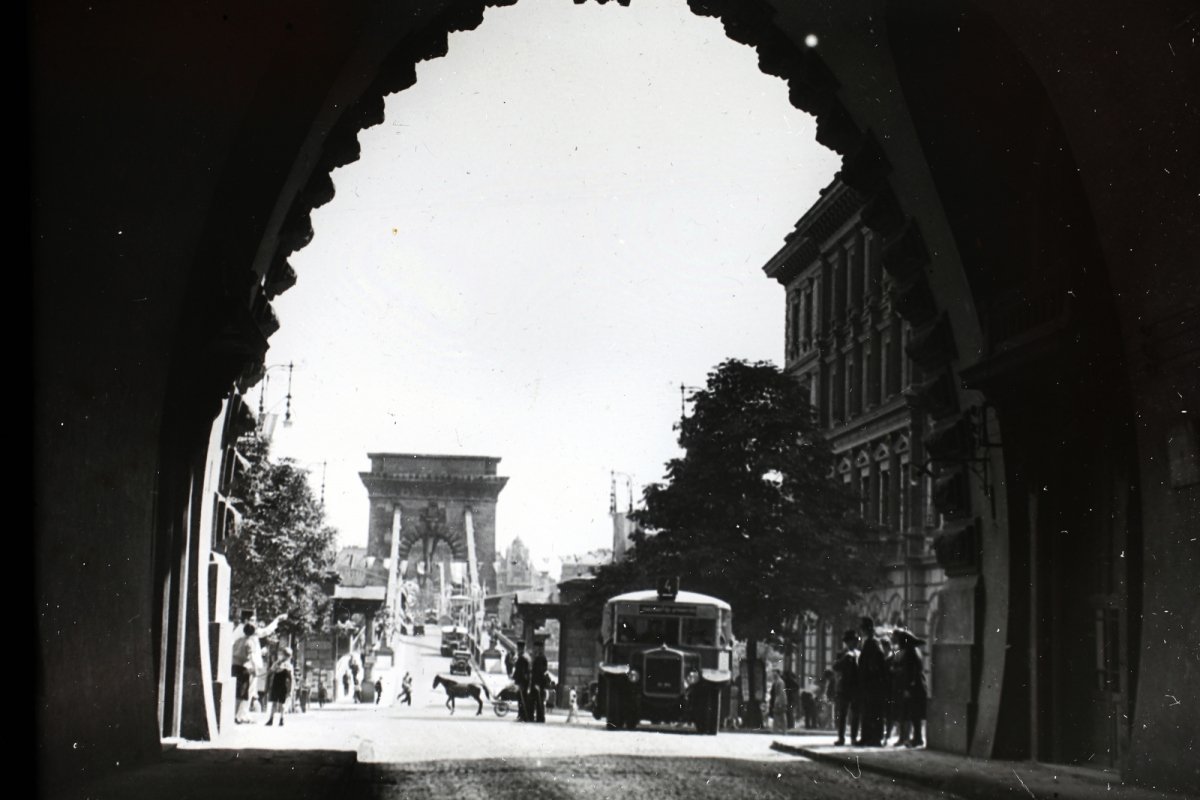


































Hozzászólások
Log in or register to comment!
Login Registration